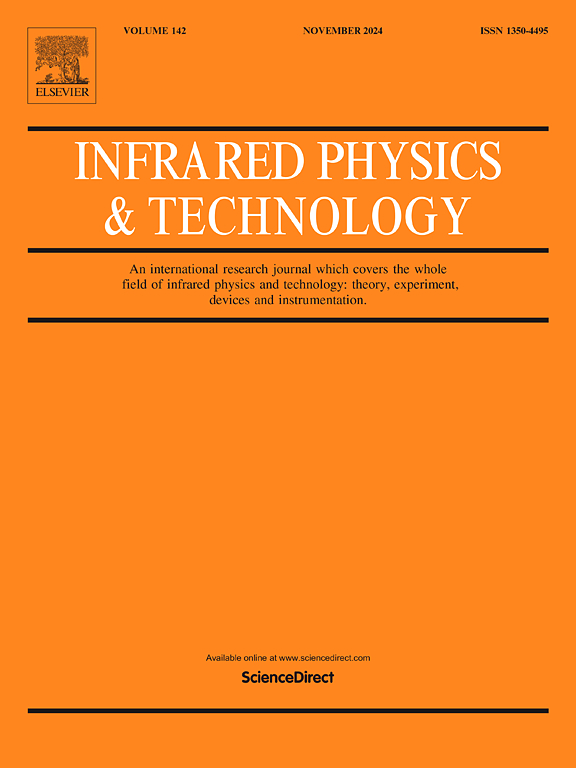Interface trap-induced dark current in graded-layer long-wavelength infrared HgCdTe nBn photodetector
IF 3.1
3区 物理与天体物理
Q2 INSTRUMENTS & INSTRUMENTATION
引用次数: 0
Abstract
Long-wavelength infrared (LWIR) mercury cadmium telluride (HgCdTe) nBn photodetectors are highly promising for low dark current. Introducing Cd composition and doping concentration graded-layers effectively optimizes band alignment and carrier distribution, enhancing optoelectronic performance. However, these graded-layers generate unique interface traps that differ from bulk traps, due to intrinsic trap properties, strain relaxation and interdiffusion effects. This work specifically explores the dark current characteristics of the graded-layer LWIR HgCdTe nBn photodetector using simulation tools, achieving strong agreement with experimental results. Results confirm that interface traps are the dominant contributors to dark current, surpassing conventional Shockley-Read-Hall (SRH), Auger, and radiative recombination mechanisms. Their contribution to dark current is 1–2 orders of magnitude higher than that from bulk traps. These interface traps include acceptor-like traps located approximately 0.025 eV below the conduction band and donor-like traps around 0.25 eV above the valence band, primarily modulating interfacial charge density and electric fields through carrier capture and release processes rather than direct generation-recombination (G-R) effects. Notably, interface traps, particularly those at the absorber-barrier interface, are directly responsible for the observed negative differential resistance effect within 0.1–0.2 V reverse bias. This phenomenon is attributed to Fermi level shifts that lead to asynchronous ionization of charged traps. These effects persist with the similar order of photocurrent under infrared illumination, further highlighting their critical role. This work offers new insights into the role of interface traps in LWIR HgCdTe nBn photodetectors, offering guidance for optimizing their performance.
求助全文
约1分钟内获得全文
求助全文
来源期刊
CiteScore
5.70
自引率
12.10%
发文量
400
审稿时长
67 days
期刊介绍:
The Journal covers the entire field of infrared physics and technology: theory, experiment, application, devices and instrumentation. Infrared'' is defined as covering the near, mid and far infrared (terahertz) regions from 0.75um (750nm) to 1mm (300GHz.) Submissions in the 300GHz to 100GHz region may be accepted at the editors discretion if their content is relevant to shorter wavelengths. Submissions must be primarily concerned with and directly relevant to this spectral region.
Its core topics can be summarized as the generation, propagation and detection, of infrared radiation; the associated optics, materials and devices; and its use in all fields of science, industry, engineering and medicine.
Infrared techniques occur in many different fields, notably spectroscopy and interferometry; material characterization and processing; atmospheric physics, astronomy and space research. Scientific aspects include lasers, quantum optics, quantum electronics, image processing and semiconductor physics. Some important applications are medical diagnostics and treatment, industrial inspection and environmental monitoring.

 求助内容:
求助内容: 应助结果提醒方式:
应助结果提醒方式:


